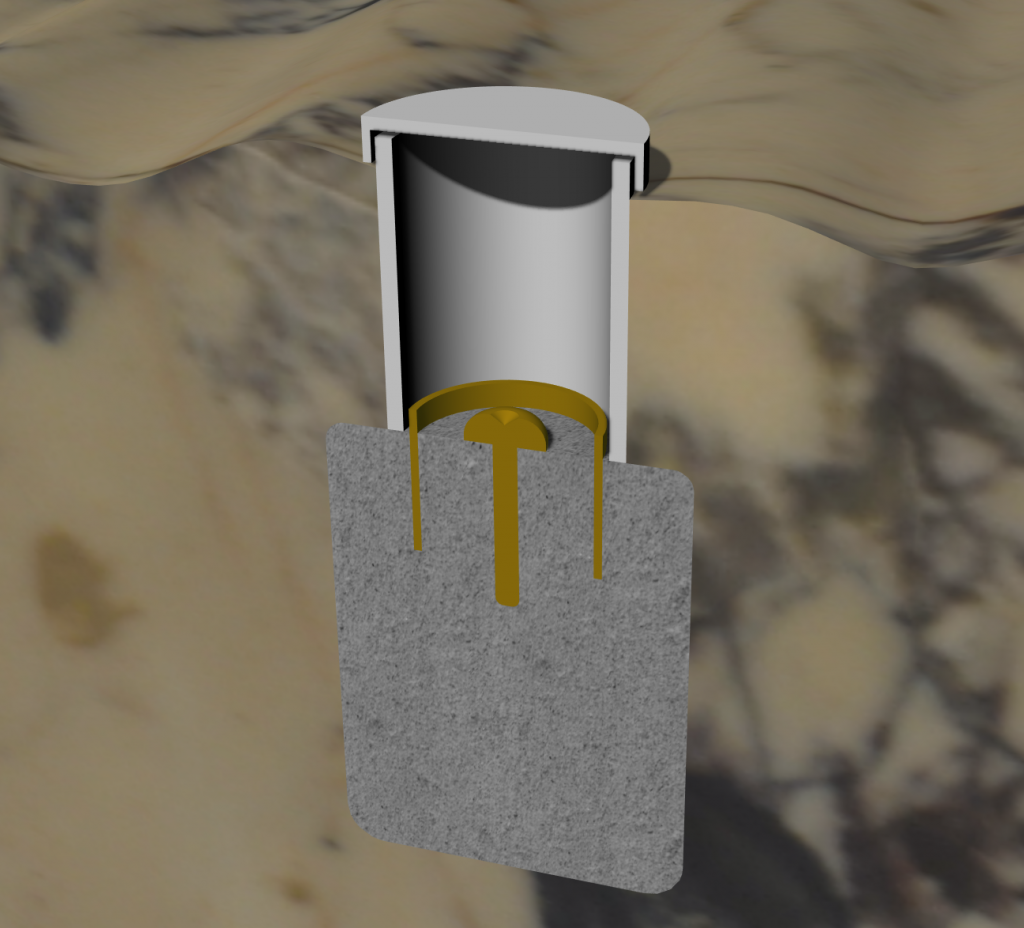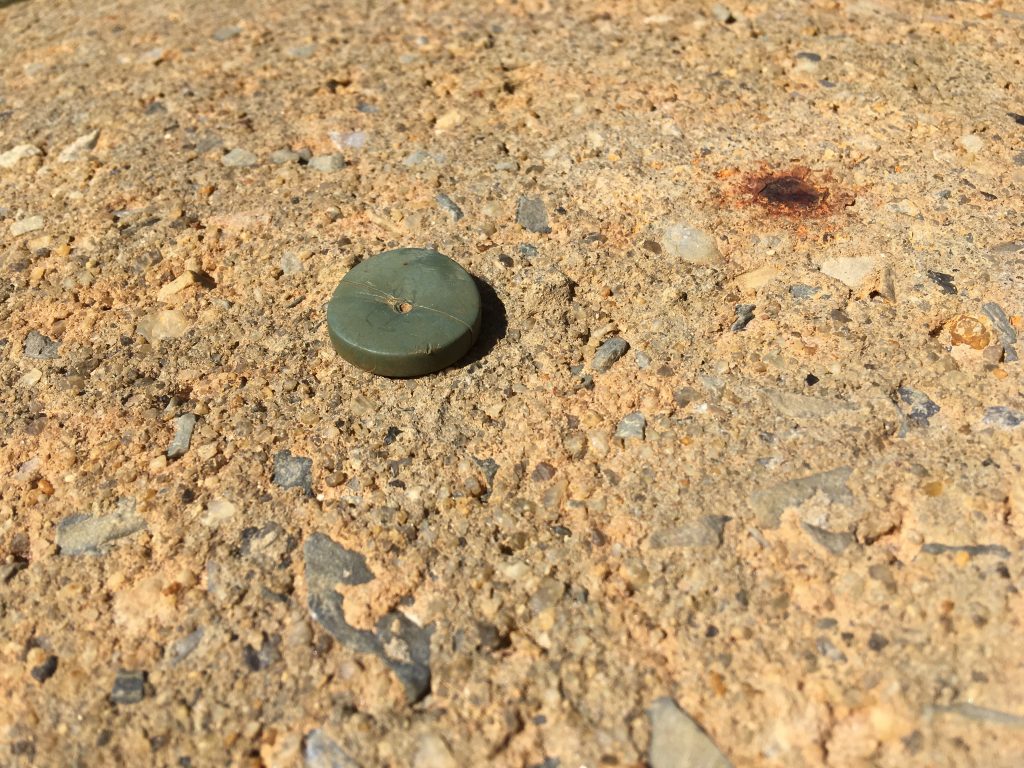Today, I’m going to talk about some surveying stuff. One of the challenges in surveying (and science too) is establishing long term marks for spatial monitoring. Examples may include subsidence and displacement monitoring for mine sites, civil works, and for scientific applications like monitoring sea level.
A lot of the time, monitoring marks just have to be robust and placed in locations resistant to movement. Usually a nice big lump of concrete, with a robust metal marker on top, similar to a typical permanent survey mark is ideal.
However, sometimes monitoring marks have to be placed in locations where they are prone to damage. Marks may need to be placed along roads, and while traffic is usually not a problem, lawnmowers and graders wreak a terrible toll on any exposed marks. High salinity environments also shorten the lifespan of monitoring marks. Metal monitoring marks by the seaside, or marks around some tailings dams will often corrode within months to years.
There are a couple of cheap and simple solutions to these challenges. To protect marks in locations where surface disturbance (graders, lawnmowers, etc) may occur, I recommend placing the mark itself around 150mm below the ground. However, rather than trying to include a robust access lid that’s well connected to the concrete, instead inset just a small length of metal pipe into the concrete with the monitoring pipe. Then, use a short length of plastic stormwater pipe from the concrete to just above the surface. This plastic pipe is intended to be sacrificial and should just sit loosely on the concrete, around the metal pipe. The metal pipe/stormwater pipe should prevent dirt entering the hole, but also doesn’t make a waterproof seal, so water can’t build up in the hole. The pipe at the surface is capped with a standard stormwater dust cap, with a small sawcut in each side so that they can be removed easily. In the event of an impact, the plastic pipe can be destroyed without affecting the monitoring mark. Then, it’s a simple matter to dig out the hole and place a new plastic cover over the mark.

Marks built using this method have now been in use for monthly monitoring over two years. Access to each mark is easy, and there have not been any problems with wildlife, dirt or water entering the holes. As they are exposed above the surface by a few centimetres, they are easy to find. More importantly, one of the marks has been hit by a grader multiple times. In each case the plastic has been destroyed, but the marks were undamaged and the plastic pipe and cover replaced in a matter of minutes.
Instead of using metal marks in locations where corrosion is likely, I use plastic marks, specifically, the hinge pins from wheelie bins. If you don’t have access to these, you should be able to find something similar. A hole is drilled into the concrete and the hinge pins are then hammered gently into place. Finally a small divot is drilled in the pin to define the mark. These plastic marks have been used for 5-10 years at a site where they are regularly exposed to hypersaline conditions. The previous marks (metal ramsets) usually last for years/decades, however in this environment they corroded away within 3 years.
